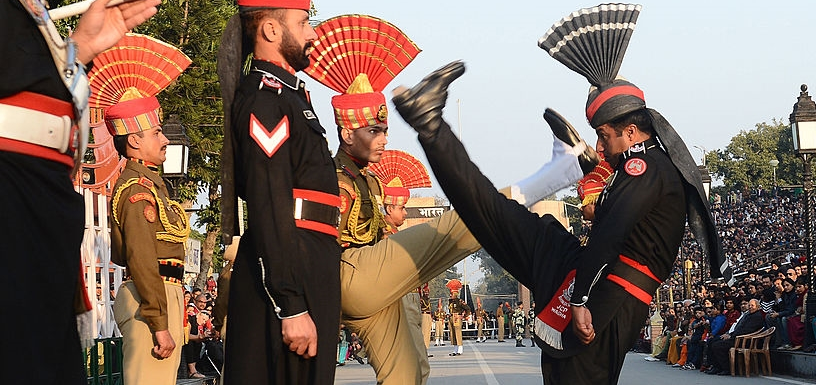
While Pakistan and India celebrated the 18th year of achieving “nuclear status” last month, South Asia remains on the verge of serious danger. Recently, India tested a supersonic interceptor missile, raising eyebrows in the Pakistani security establishment. Nafees Zakaria, the spokesperson for Pakistan’s Foreign Office, issued a statement stating that he believed such tests could instigate a fresh nuclear arms race in the region and seriously “disturb strategic balance in South Asia.” For its part, Pakistan could have the third largest nuclear stockpile by 2025, after the United States and Russia. In this context, it is timely to determine whether existing nuclear weapons or American diplomatic intervention has primarily prevented the outbreak of open conflict in South Asia. Looking back at history could provide useful lessons that could have application for future crisis situations.
Since 1998, when Pakistan and India became nuclear states, neither side has seen an outbreak of a full-scale war. However, the 2001 Indian Parliament attack and the 2008 Mumbai attacks (both of which India says were carried out by Lashkar-e-Taiba), pushed the nuclear neighbors to the brink of a full-fledged war. However, neither India nor Pakistan launched an attack against each other even though tensions were high. Were both sides concerned about the enormous damage a nuclear war could cause, or did they yield to international diplomatic pressure?
Finding the exact answer is difficult because various factors were at play. Many believe that “fear of nuclear annihilation” was the chief reason that Islamabad and New Delhi averted war. Additionally, others see the role of nuclear weapons as paramount in bringing a regional balance of power favoring India; thus the neighbors have not gone to full-scale war since 1971.
Conversely, there are several reasons to believe that war was avoided because of timely intervention by the United States and other major powers. For instance, after the 2001 Indian Parliament attack, tensions between Pakistan and India reached a peak, and war seemed inevitable. However, American diplomacy played an important role in cooling tensions between India and Pakistan. Richard Armitage, then U.S. Deputy Secretary of State, traveled to Islamabad and New Delhi in a bid to stop the outbreak of war. He met with Pakistani President Pervez Musharraf and Indian Prime Minister Atal Bihari Vajpayee to convince the two leaders to revert to the pre-2001 situation. Through the efforts of American-led international diplomacy, both India and Pakistan abstained from going to war, and the armies returned to peacetime positions.
After the Mumbai attacks of 2008, the atmosphere again darkened and the risk of hostilities soared once more. India accused Pakistani nationals of plotting and executing the attacks, whereas the Pakistani government denied responsibility. Again, American diplomacy played a crucial role in preventing conflict between India and Pakistan. Secretary of State Condoleezza Rice traveled to both capitals and negotiated a resolution to a very tense situation.
The nuclearization of South Asia in 1998 and the advancement of the missile programs of both countries have enabled Pakistan and India to deter each other, but this has neither provided absolute security nor created incentive to resolve a crisis bilaterally. Nuclearization normally brings maturity in the conduct of states. For example, the United States and Russia, which had around 63,000 nuclear warheads in 1986, now have a little over 9,000 weapons combined. In the case of South Asia, however, the picture is quite different. Pakistan and India are on track to increase their number of nuclear weapons.
Although the United States has fundamentally served as a troubleshooter between India and Pakistan, it could play a larger role in establishing more enduring peace between the two neighbors. Washington can induce Islamabad and New Delhi to resolve outstanding issues, particularly Kashmir. Especially with its stake in Afghanistan and its leverage in South Asia, the United States could influence India and Pakistan to work together on regional security and economic issues, including potentially less thorny ones such as economic integration of the region.
The nuclearization of South Asia is dangerous. It neither ensures a balance of power nor effective deterrence. Despite having substantial weapons in their possession, Pakistan and India cannot ensure peace, and an incident like the 2001 or 2008 attacks could easily endanger the region again. Every time clouds of mistrust hover over South Asia, the United States and other international actors have restored stability in the region. however, these resolutions are not enduring. A small bright spot in the Indian-Pakistani relationship is the Pathankot case, in which both countries lowered tensions bilaterally, without the involvement of the United States or another third party. However, this doesn’t necessarily mean the U.S. role is over, or that the two sides can overcome every crisis bilaterally. However, it does emphasize the importance of diplomatic efforts in preventing the outbreak of conflict in South Asia. Nuclear weapons may well have prevented war in South Asia but peace is ensured through diplomacy.
***
Image: Arif Ali-AFP, Getty


